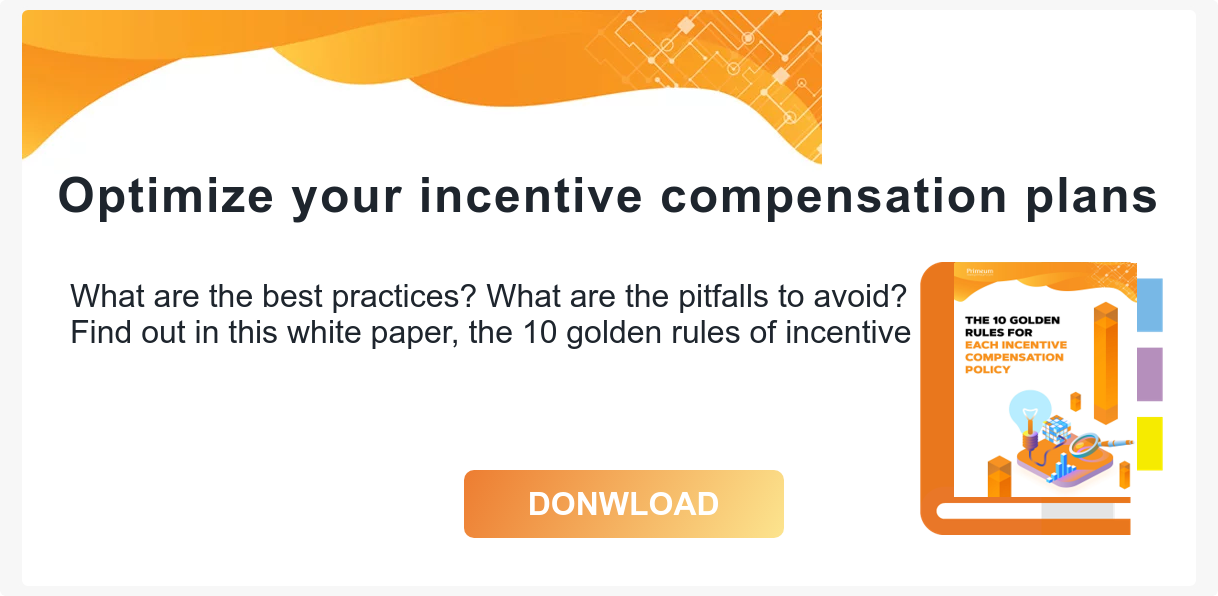The share of incentive compensation in European salaries, all schemes included, rose from 17% in 2000 to 33% in 2015 (European Trade Union Institute ETUI study, 2021: Performance pay across Europe_2021.pdf (etui.org), published by Wouter Zwysen)
Remuneration comprises a so-called fixed component, consisting of a basic salary, and a so-called variable component, distributed according to performance. What is the purpose of incentive compensation? To encourage individual or collective performance, to recognise it and above all to value it.
By its very nature, incentive compensation differentiates between employees according to their performance. Incentive compensation should not be issued if an employee is far from achieving their expected performance, but the maximum bonus should be given for performance that meets or exceeds targets. Why should incentive compensation seek fairness in the recognition of individual performance rather than equality between recipients? In this article, we will think about the essence of incentive compensation: rewarding employees as fairly as possible to increase performance.
Incentive compensation by its nature generates pay differentials
While some employees will meet or even exceed their targets, others will be relatively far off. As such, the aim should not be to make incentive compensation equal, but rather to make it fair. By way of illustration, some social partners may have a vision which tends towards an egalitarian view of remuneration: according to some claims, all employees should receive the same amount, and this should, for instance, be increased in the same way for everyone. However, based on a fair vision of incentive compensation, the person who works the most and the best should be able to earn more than the person who has not performed as well, or even not achieved any targets at all.
There are two key aspects to consider when designing an incentive compensation scheme:
1 - The company must be able to justify the incentive compensation system established at the outset. The incentive compensation system put in place must therefore be fair from the get-go, and each employee must have the same chance to perform. Employees should be given the same level of information and the same performance opportunities from the start.
2 - All employees must be clearly informed of what is expected of them in terms of targets and performance, and the incentive compensation system must be fully measurable. This means the targets should meet “SMART” criteria and be:
- Specific: the targets must be specific and concrete
- Measurable: the targets to be achieved must be quantifiable
- Achievable: the targets must strike a balance between being challenging but not unattainable
- Realistic: the targets must take into account external or internal constraints and the company’s resources
- Time-related: a deadline should be set to put employees on alert until the deadline arrives and to encourage greater commitment.
In the light of these two key principles, incentive compensation will inherently create inequalities – firstly, between those who receive incentive compensation and those who do not, and secondly, between top performers and those with less remarkable results. It is also worth asking the following question: between an employee with incentive compensation and one without, which one is potentially more satisfied with their situation?
Incentive compensation is designed to reward the best employees. Since everyone has the same means to perform, it seems fair to reward the best performers to keep their motivation levels high and encourage them to perform well, just as everyone else needs to be motivated to exceed their targets to earn more.
What is the European view of incentive compensation?
The use of incentive compensation is becoming more widespread in Europe. This trend reflects a desire to differentiate between remuneration for individual performance and remuneration generated collectively. Incentive compensation thus helps create a link between what the company will earn and what the employee ultimately receives.
The time for collective increases seems increasingly distant. In a collectivist vision, all employees will receive the same percentage increase without distinction, but for incentive compensation to be effective, it must not be distributed indiscriminately, but instead reward specific, and often individual, performance.
Society is moving towards greater individualisation, and incentive compensation is no exception to the rule. This is a fundamental trend: companies are seeking fairness rather than equality. It is important to point out that incentive compensation schemes are rarely fair without the involvement of experts. When companies receive little or poor advice, they frequently make mistakes that make incentive compensation schemes exceptionally unfair. Incentive compensation is therefore part of a strategy to find a way of paying fairly and giving the fairest possible recognition for individual or collective performance.
Incentive compensation can be offered for all positions
Even though incentive compensation originally rewarded employees whose jobs had a direct impact on turnover, such as salespeople, employers now realise that the variable component is a motivational lever at all hierarchical levels and for all functions, particularly support roles, which indirectly influence many of a company’s performance indicators.
Let’s take the example of delivery drivers: incentive compensation based on the speed and quality of order deliveries can be quite relevant. Deliveries do not have a direct impact on a company’s turnover as the orders have already been paid for, but the performance of the delivery drivers has a positive impact on customer satisfaction and encourages customer loyalty. Therefore, a way must be found to fairly reward individual performance so as to continue to generate commitment and maintain high levels of customer satisfaction.
Incentive compensation: a solution for increasing low wages?
According to the study published by the ETUI, for the same job in the same country, employees with incentive compensation receive 7-9% more than their counterparts who do not receive incentive compensation. By offering incentive compensation for low-paid jobs, a company can therefore boost the income of its employees with the most unstable jobs by 7-9% depending on their performance. Incentive compensation consequently improves the situation for the lowest paid staff and encourages the most committed employees to stay on.
Moreover, according to the same study, incentive compensation is not often used in short-term contracts, which women are often on. This is also a cultural practice which is bound to change. Companies which offer incentive compensation schemes for short-term contracts successfully motivate these “transient” employees over a short period of time. These employees are often less committed because they naturally feel less attached to the company.





